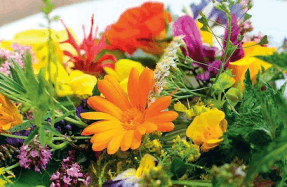Stonecrops, orpines and ice plants

This week it’s:
AS a fledgling gardener, one of my favourite late-summer border plants was Sedum spectabile (pronounced ‘spectah-b’lee’). Bees and butterflies go crazy for it, and it has red, pink and rustcoloured flowers for the front of a late summer border. I fell in love with all of the sedums, from those with large, umbrella-like flowerheads, to the tiny alpines in bright yellow, white and silver.
Then the botanists split the sedums into not just three different genera, but also into numerous ‘clades’, ‘tribes’, ‘subdivisions’ and ‘sub-genera’, making it one of the most complex plant groups. Thanks guys! Along with the remaining sedums, we now have hylotelephium and the lesser known rhodiola. Let’s take a look…

Hello there, hylo!
SINCE 1977, many of my beloved sedums (including ) now come under the name hylotelephium. I prefer their common name – ice plant – after the waxy texture of their grey-green leaves. Despite ‘ice’ suggesting the cold, these plants thrive in the full glare of the sun, on a free-draining, even dry (Herbstfreude Group) ‘Herbstfreude’ (often seen as ‘Autumn Joy’); its flat-topped flowerheads are dark pink, changing to crimson and eventually a rich rust.
You’re reading a preview, subscribe to read more.
Start your free 30 days



